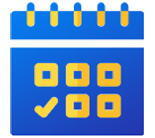- Study Destinations
- More


What Is A Motivation Letter?
The motivation letter, sometimes referred to as a personal statement or statement of purpose, is frequently necessary as part of the college application process.
The goal of a motivation letter is to give the admissions committee information about the applicant's personality, objectives, successes, and reasons for choosing the program of study for which they are applying.
Applications should include a motivation statement outlining why they are applying and how their experiences and background have prepared them for the program.
Their academic and personal accomplishments, as well as any extracurricular activities or voluntary work they have participated in, should all be mentioned.
The application letter should be strong and persuasive, demonstrating the applicant's clear communication and critical thought capacity.
Important Tips To Consider Before Writing A Motivational Letter
Before writing a motivational letter, consider the following important points:
Recognize The Goal
It is essential to comprehend the motivational letter's purpose before writing it. Your reasons, objectives, accomplishments, and experiences that make you a good fit for the program should be highlighted in the letter.
Research The Program
Spend some time researching the school and program you are applying to. Understanding the program's requirements, structure, and objectives will be made easier with this. Make use of this data to customize your letter to the program.
Maintain A Formal Tone
The tone of a motivational letter should be professional. Avoid using slang or informal language and use proper grammar. Also, don't use statements that are the same everywhere.
Showcase Your Achievements
Highlight your academic accomplishments, extracurricular activities, and relevant work experience in the motivational letter. This will assist you with standing apart from different candidates.
Determine Any Weaknesses and Fix Them
If your message has any possible flaws, address them. Tell the truth and describe your plan of attack to stop them.
Be Special
To show how your experiences have assisted your program preparation, you must be factual and include examples in your letter. Be as specific as possible in your writing and avoid generalizations.
Proofread
Make sure your letter is error-free by carefully proofreading it before submitting it. Check for grammatical, spelling, and typographical errors.
You can write a compelling and persuasive motivational letter highlighting your strengths and convincing the admissions committee that you are the best candidate for the program if you follow the above tips.
Formalities Of A Motivation Letter
While writing a motivation letter, there are a few formalities that ought to be thought of:
Make Use of A Formal Format
A professional format for a motivational letter should include a concise introduction, body, and conclusion. Make sure your letter is well-organized and easy to read using a formal font and standard margins.
Correctly Address the Letter
A formal salutation, such as "Dear [Admissions Committee]" or "To Whom It May Concern," should be used to begin your letter. Use the recipient's name if you are aware of their identity.
Adopt A Polite Tone
A motivational letter should be written with proper grammar and sentence structure in a formal tone. Be careful not to use slang or colloquialisms, and use the correct tense.
Be Clear and Brief
Each paragraph of a motivation letter should focus on a specific point or subject and be clear and concise. Utilize short sentences and try not to meander aimlessly or rehash data.
Use Proof To Back Up Your Claims
Provide specific examples or evidence to support your claims about your abilities, achievements, or interests. The reader will be convinced that you are a strong candidate and credible, thanks to this.
With A Formal Conclusion
End your letter with a conventional shutting, such as "Truly" or "Yours dependably." Include your contact information, such as your email address and phone number, in your letter. Sign in with your full name.
Structure Of a Motivation Letter
The structure of a motivation letter and the contents of each section are detailed below:
- Introduction: The first paragraph of your letter is where you introduce yourself and state the purpose of your letter. And there is also Include the purpose of your letter, your academic or professional background, and also your name.
- Academic/Professional Profile: This part should include a summary of your educational and professional background and any pertinent degrees, licenses, or work experience. You should also highlight any achievements relevant to the program you're looking for.
- Why This Course: In this part, you must verify why you are interested in the program or course, you are applying for. Do some preliminary research on the program and discuss how it relates to your academic and professional objectives.
- Short- and Long-Term goals: In this section, you should talk about your long-term career goals and how the program you're applying for will help you get there. You ought to likewise talk about any short objectives you have and how the program will assist you with accomplishing those also.
- Conclusion: Your letter's final paragraph should include a summary of your key points and reiterate your interest in the program. You should likewise thank the peruses for thinking about your application.
Overall, a well-structured motivation letter should demonstrate why you are a good fit for the program or institution you are applying to by clearly and concisely explaining your background, interests, and objectives.
How To Write A Powerful Motivation Letter?
Here are a few ways to compose a strong inspiration letter
Begin Solid
Your presentation ought to quickly catch the pursuer's eye and make them need to continue to peruse. Think about beginning with an individual story, an amazing measurement, or a striking explanation that connects with your inspiration for concentrating abroad.
Give Explicit Models
Don't simply offer general expressions about your capabilities or interests. All things considered, give explicit models that show your abilities, experience, and enthusiasm for the program. Utilize substantial guides to show, as opposed to tell, why you are ideal for the program.
Underscore Your Interesting Characteristics
The entrance advisory board is searching for competitors who carry something extraordinary to the program. Feature your one-of-a-kind foundation, encounters, and viewpoints that put you aside from different candidates.
Tell The Truth and Valid
Don't attempt to be somebody you're not or compose what you think the entrance advisory board needs to hear. Tell the truth and be legitimate in your composition, and let your actual character and enthusiasm radiate through.
Show Your Examination
Exhibit that you have investigated as needed on the program and establishment. Examine explicit courses, employees, or assets that energize you and show how they line up with your scholar and profession objectives.
Be Sure Yet Unassuming
While it's vital to exhibit your assets and achievements, try not to appear to be presumptuous or entitled. Work out some kind of harmony between featuring your accomplishments and staying unassuming and thankful for the valuable chance to apply to the program.
How to Start a Motivation Letter?
While starting a motivation letter, it's important in any case for areas of strength for an engaging opening statement that captures the attention of the reader.
Here are a few hints on the most proficient method to start a motivation letter:
Use A Formal Greeting
Start the letter with a formal greeting, such as "Dear Admissions Panel" or "To The responsible party in question."
Introduce Yourself
In the initial paragraph, briefly introduce yourself and give some background information, like your name, where you are from, and your ongoing academic/professional status.
State Your Purpose
Clearly state the purpose of the letter and why you are composing it. For example, you may say, "I'm writing to communicate areas of strength for me in the Master's program in [insert field] at [insert institution]."
Use A Snare
Use a snare to capture the reader's attention and make them keen on reading the remainder of the letter. This could be a personal story, an extraordinary accomplishment, or a solid statement that features your motivation and enthusiasm for the program.
Be Compact
Keep the initial paragraph brief and direct. Recollect that the admissions panel will peruse many letters, so it's important to make areas of strength for a rapid.
Overall, the initial paragraph of a motivation letter should be elegantly composed, concise, and engaging. It ought to introduce the essayist, state the purpose of the letter, and use a snare to capture the reader's attention.
How To End A Letter Of Motivation?
Do’s and Don’ts
A letter of motivation's ending can be as significant as its opening. Choosing your words wisely is essential because the conclusion of your letter will have a lasting impact on the recipient. Here are some do's and don'ts for writing a compelling and impactful end for your motivational letter.
Do:
- Thank you for reading and your consideration.
- Express your curiosity about the job or program once more.
- Give a brief rundown of your main achievements and qualifications.
- Express your belief that you can succeed in the position.
- Politely seek the chance to talk more about the position during the interview.
- Again, thank you for reading, and please leave your complete name and contact information.
Ready to get started? Book a FREE appointment

